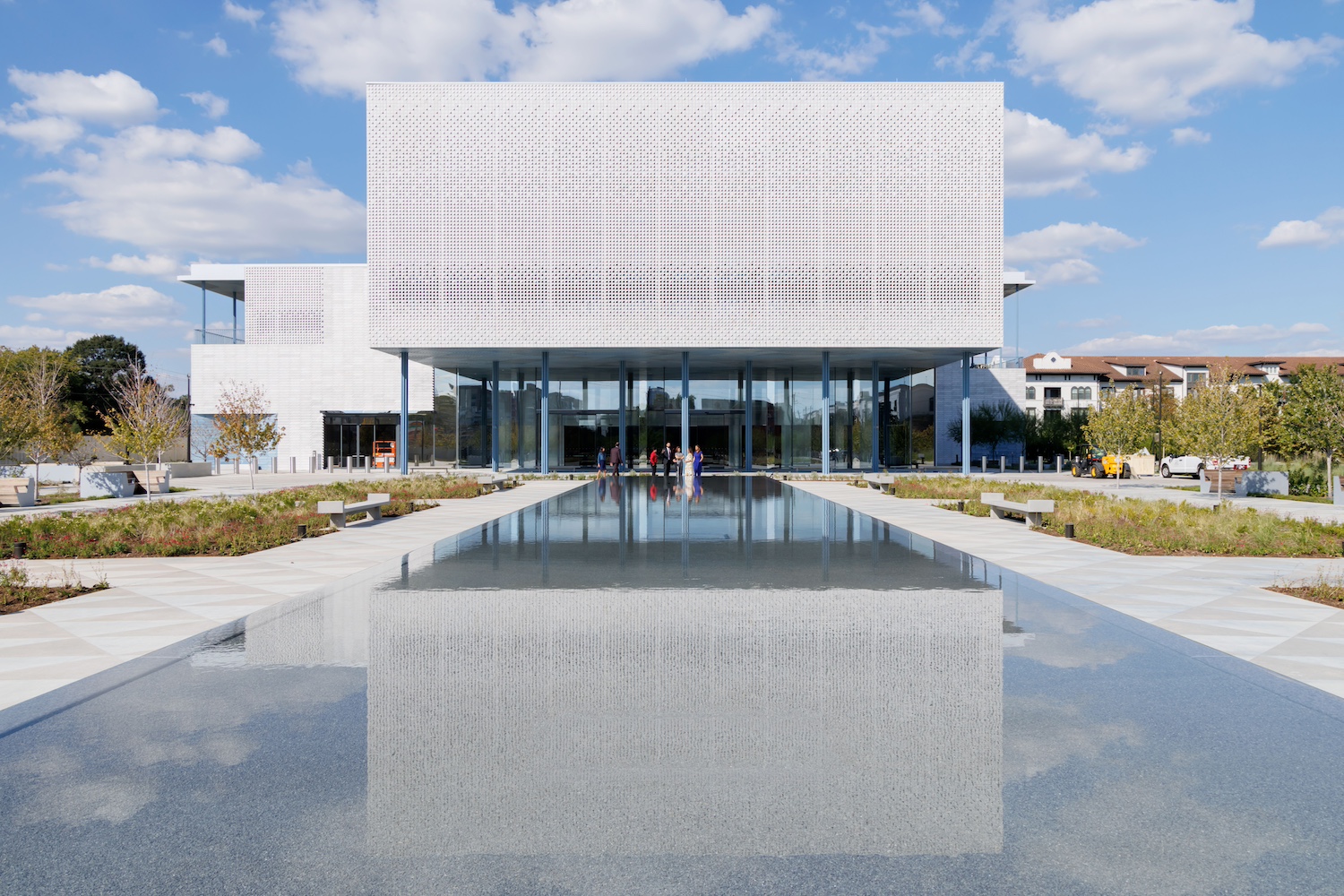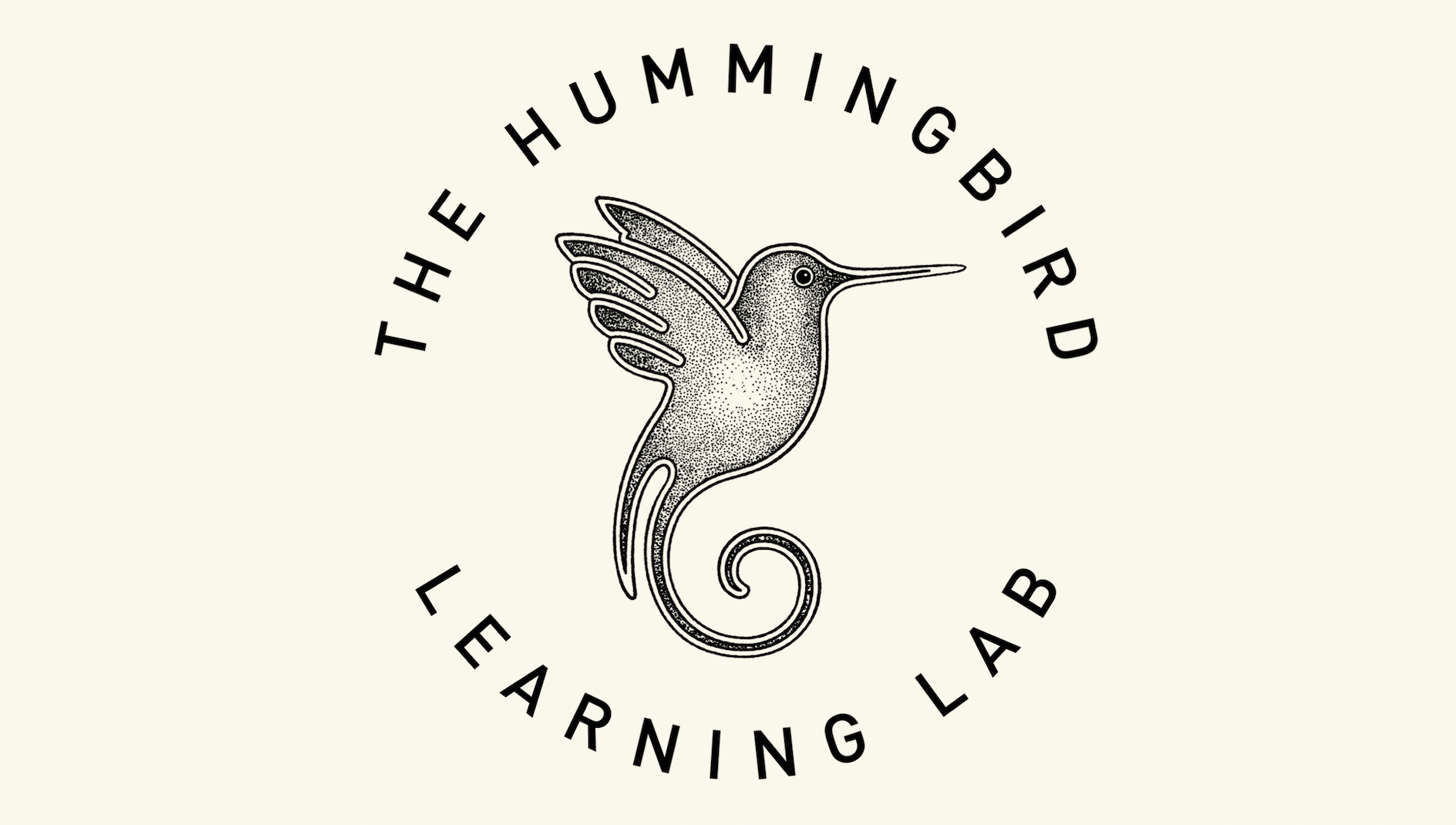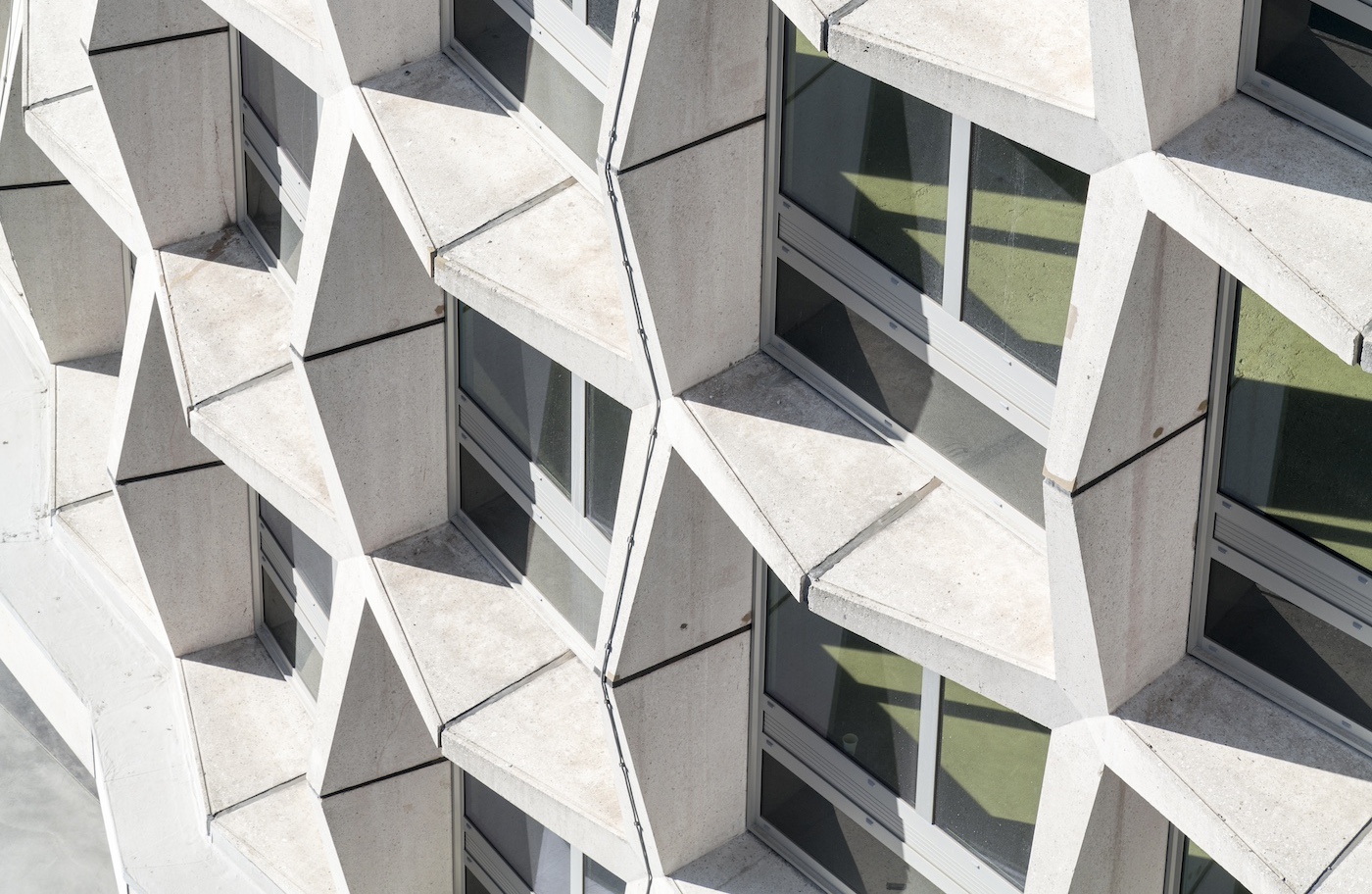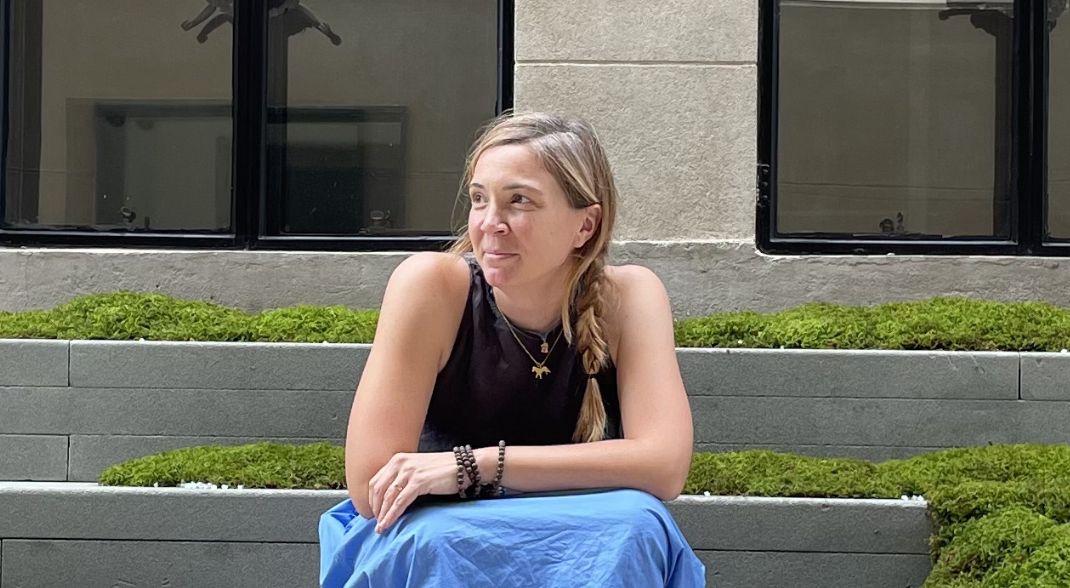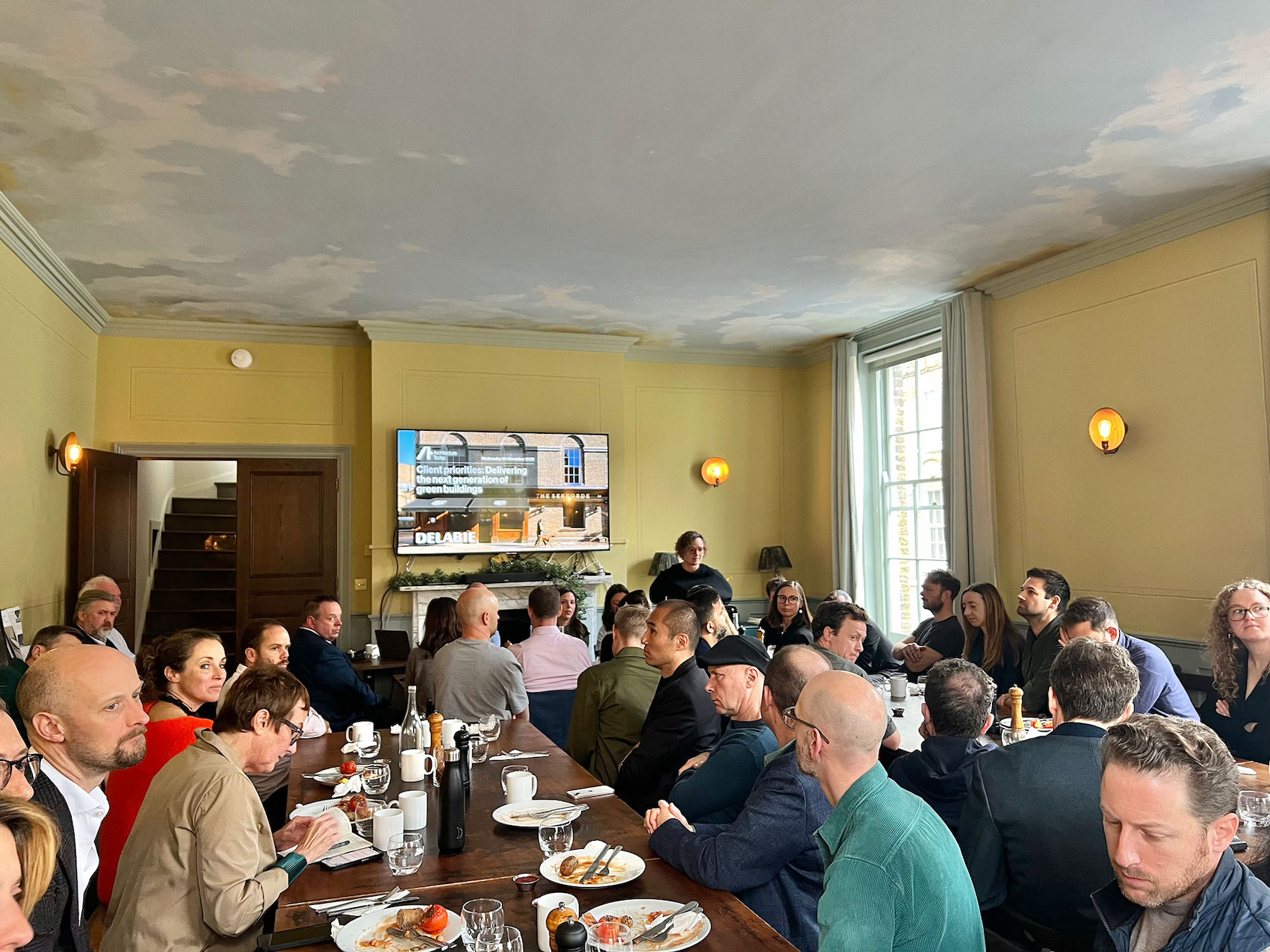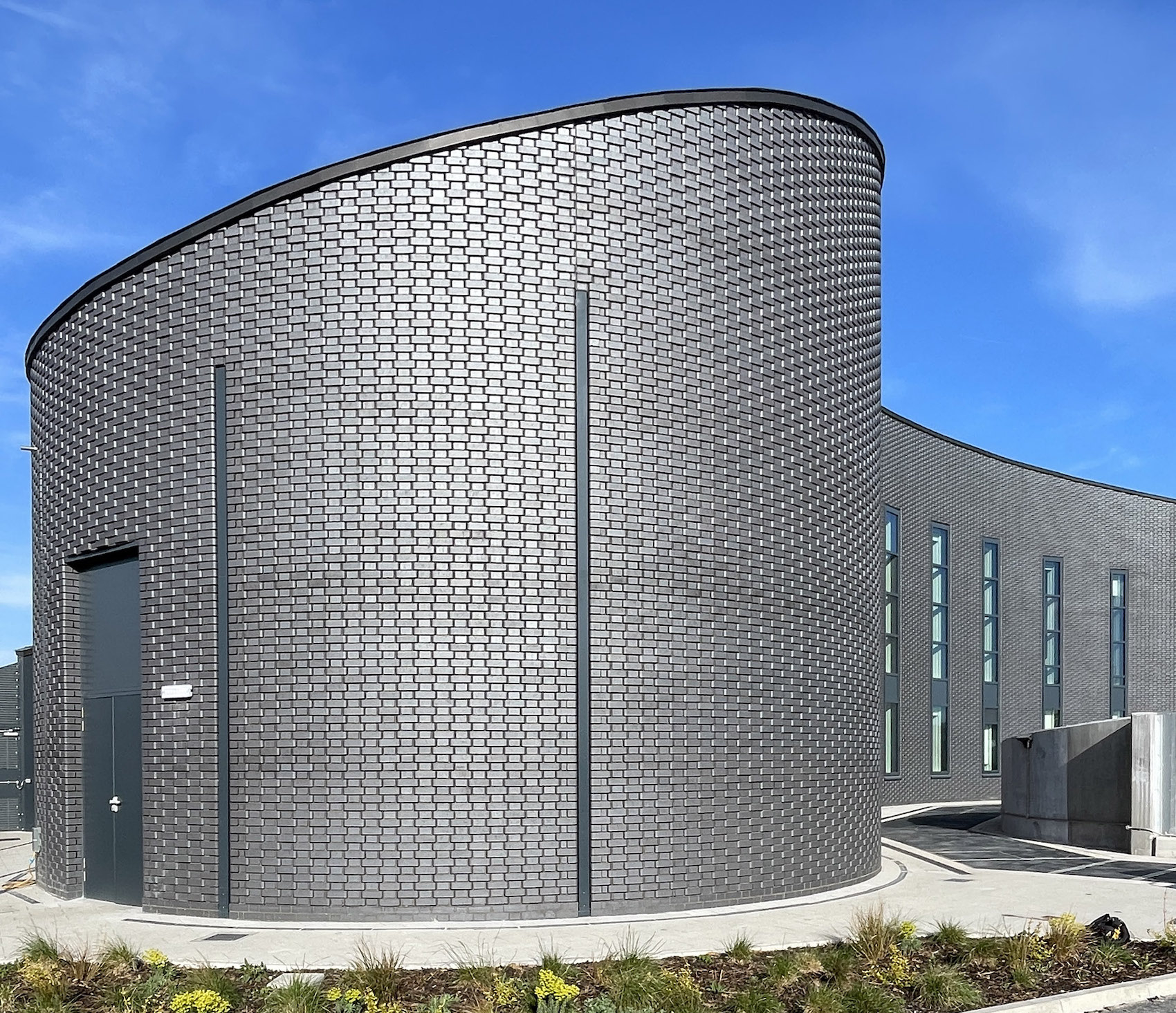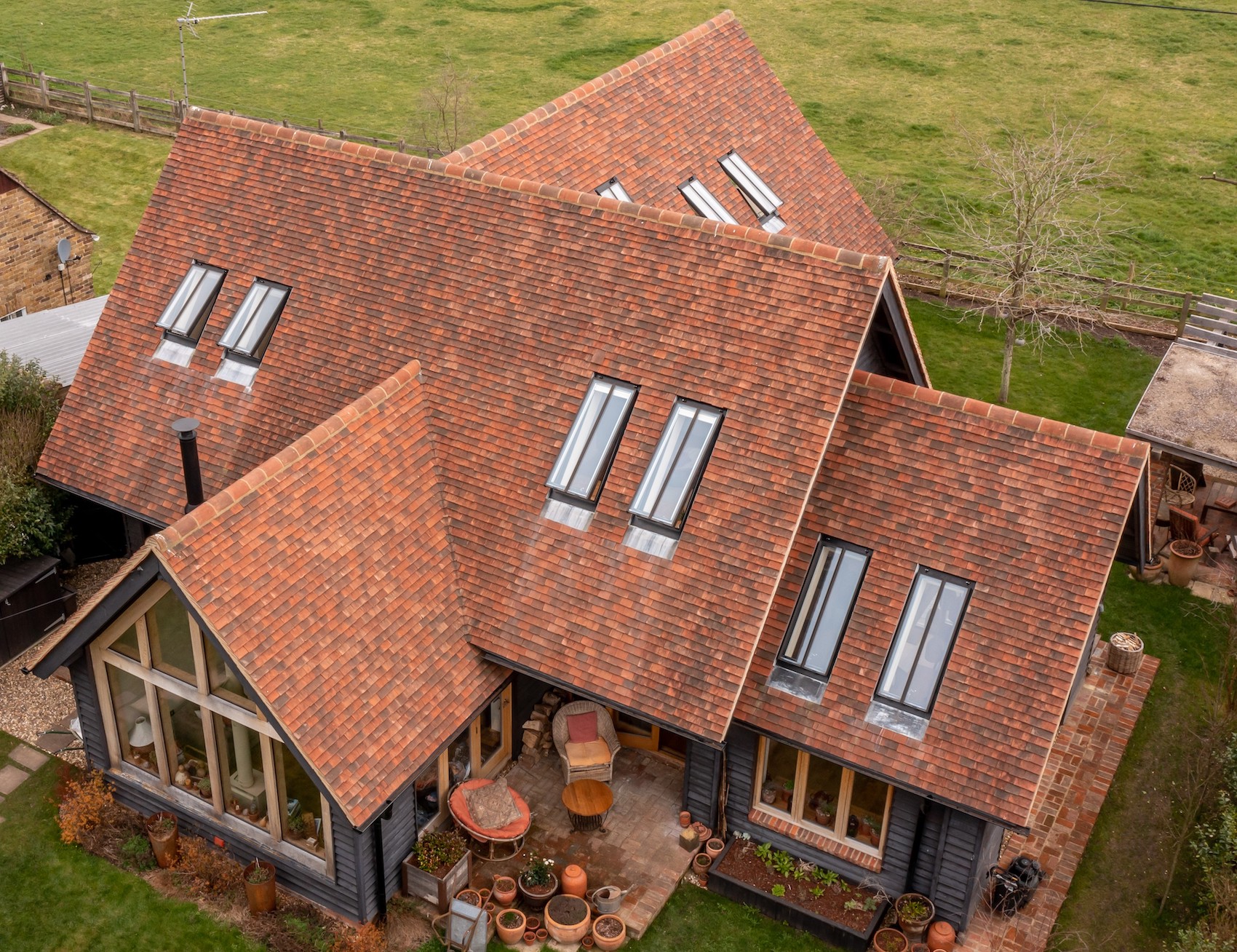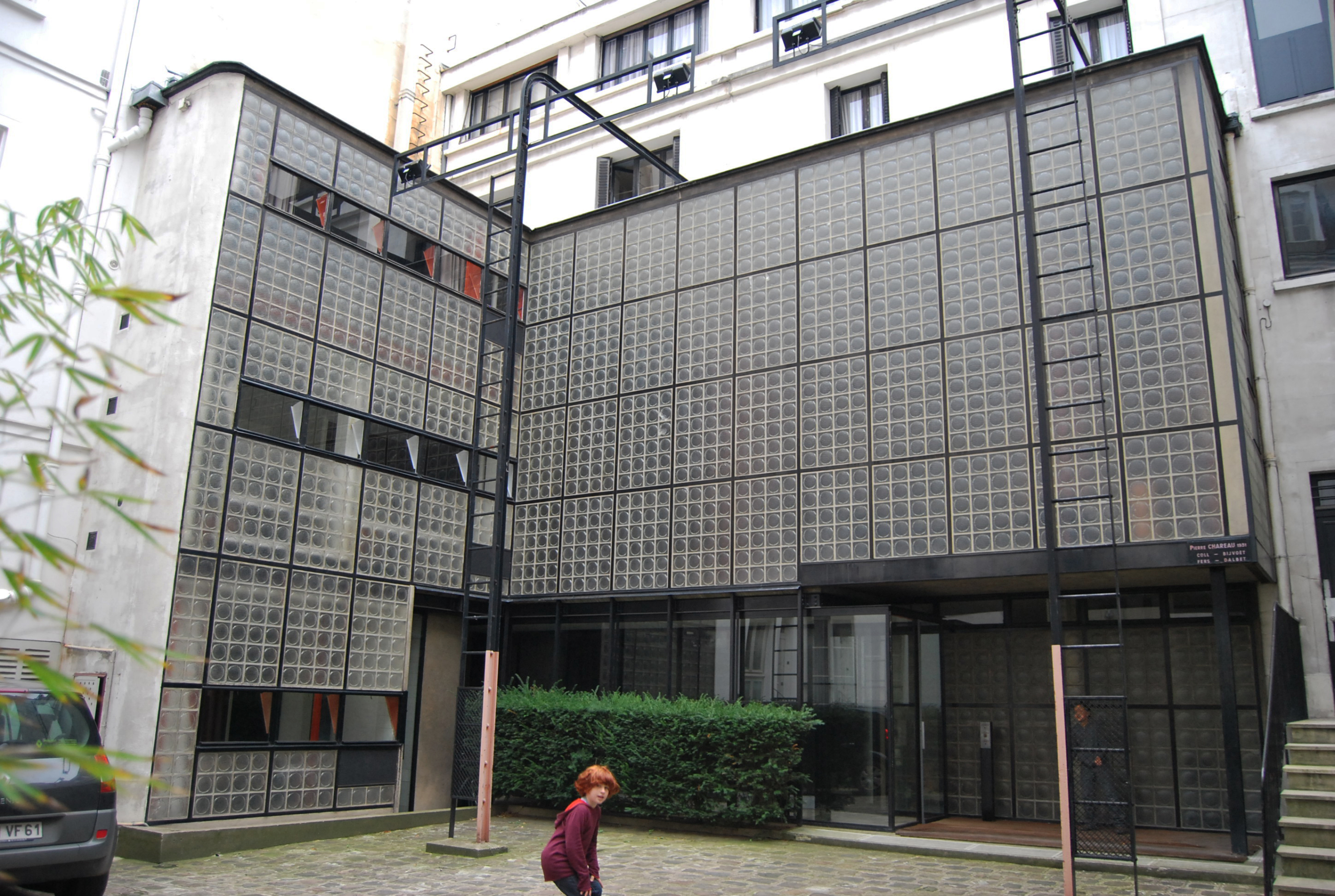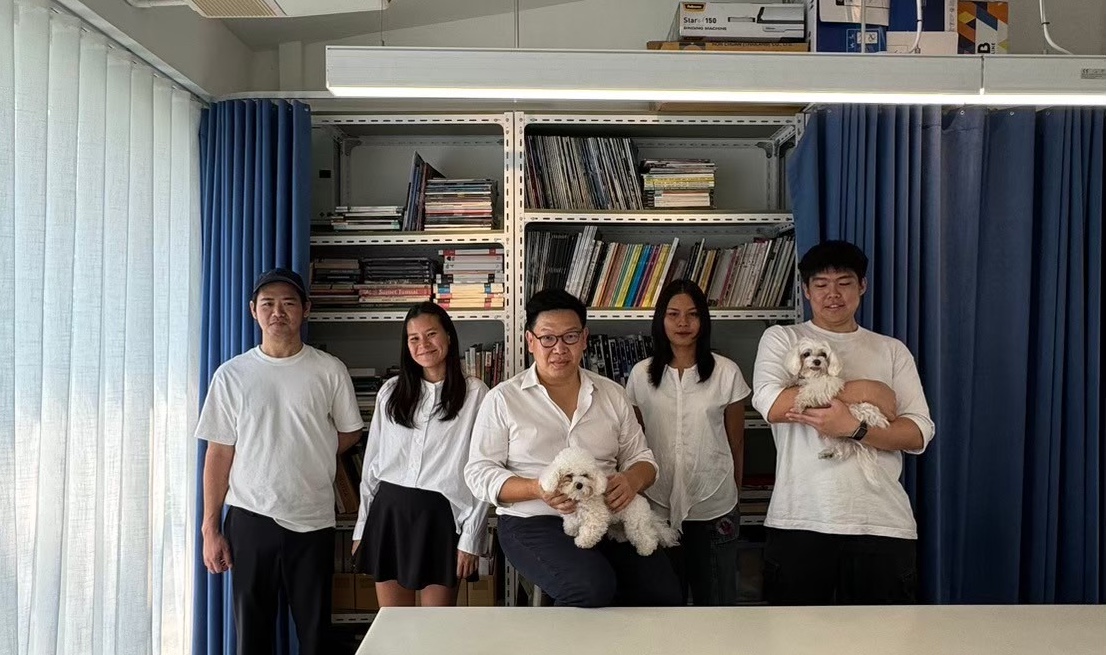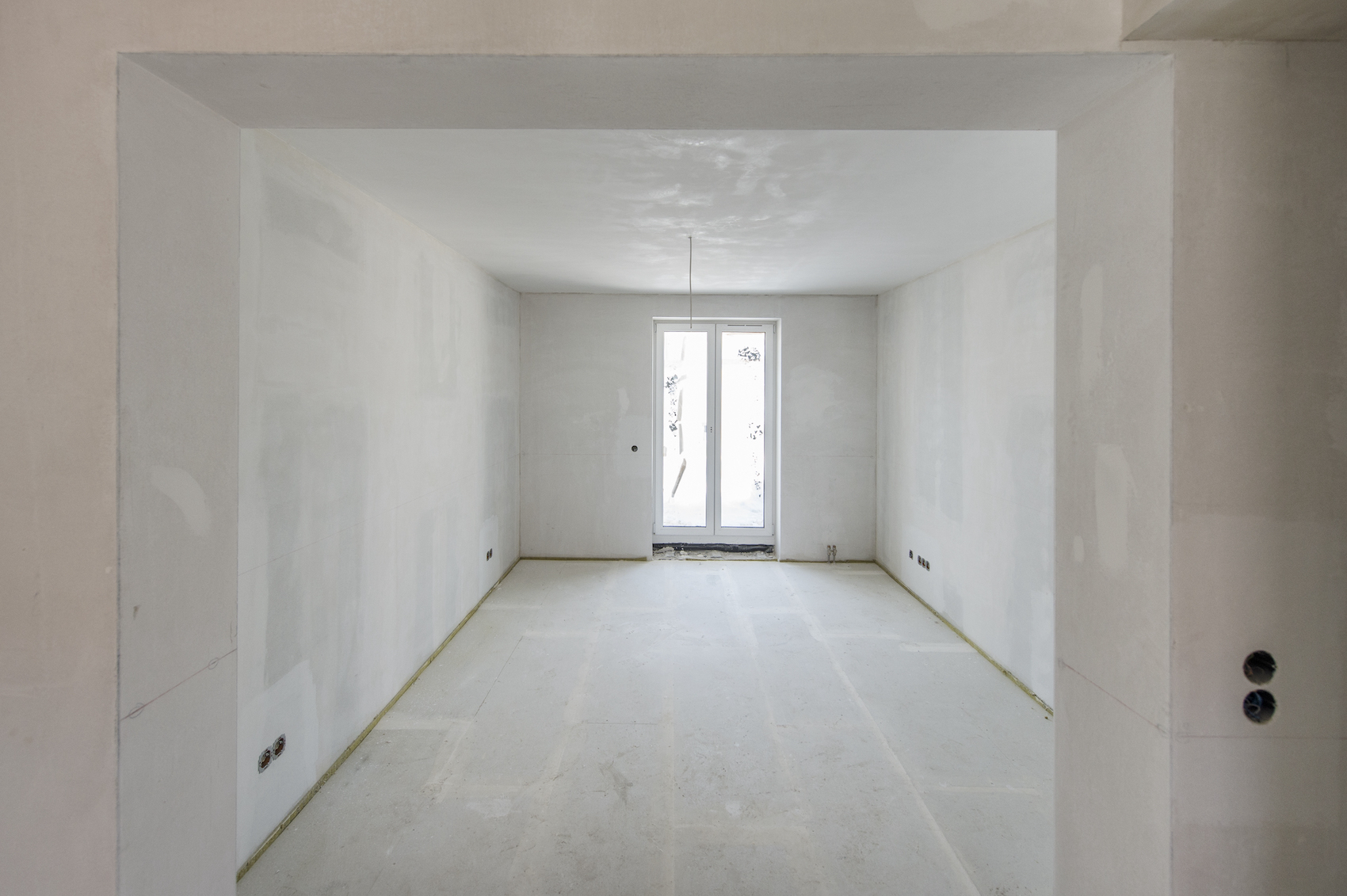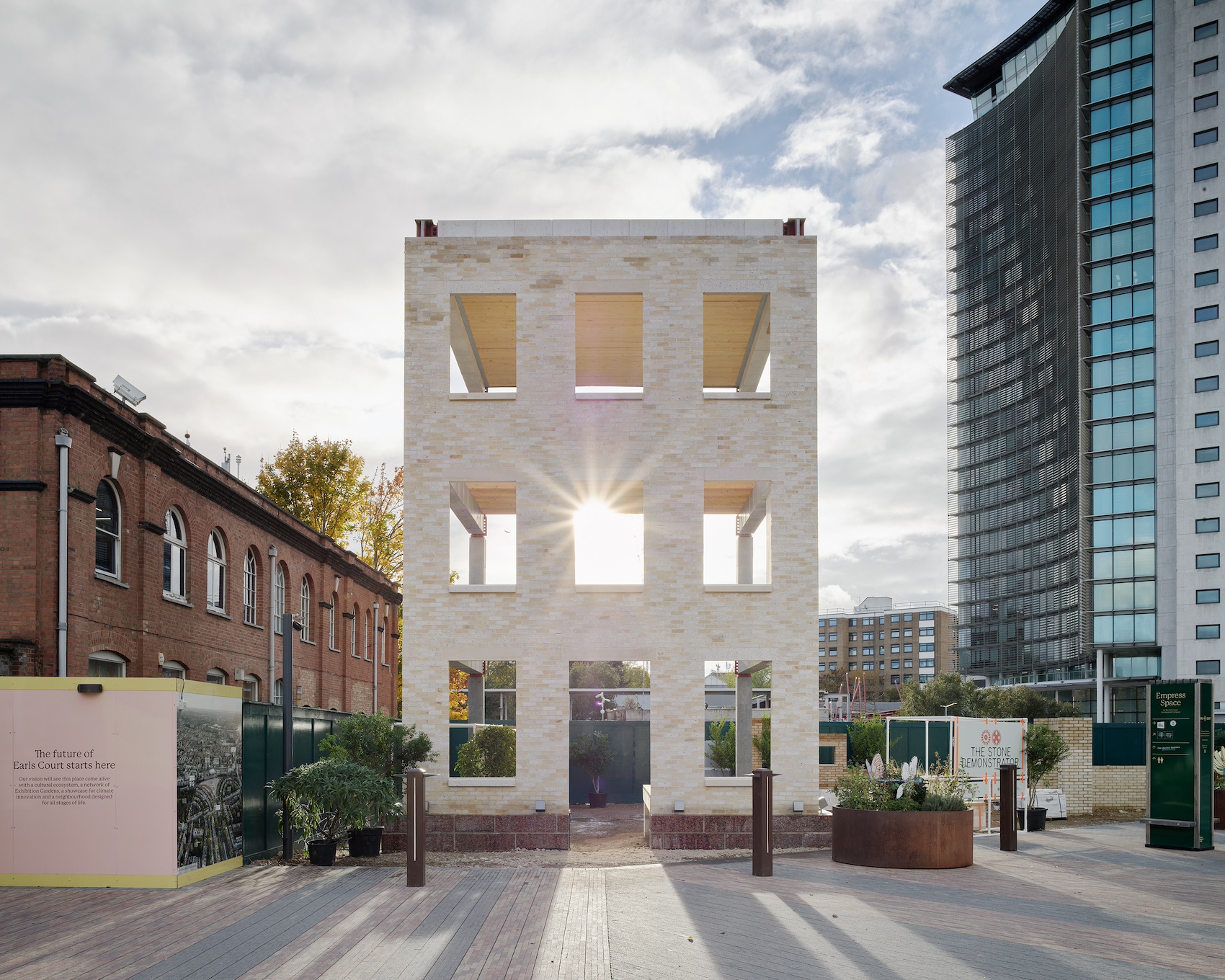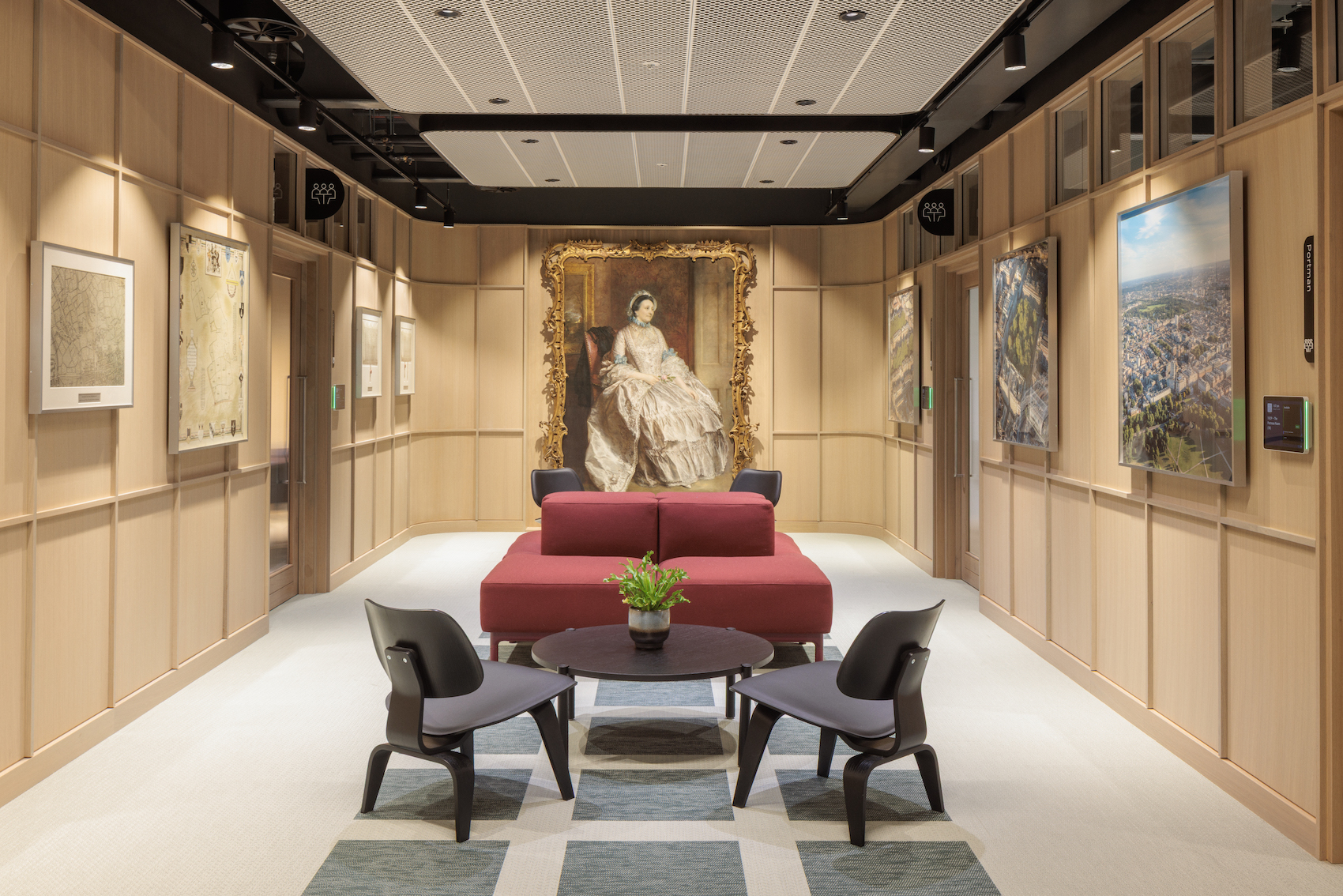French-Lebanese architect, Lina Ghotmeh, unveils her first built work in the UK as the 22nd edition of the Serpentine Pavilion, located as always in London’s Hyde Park.
“I hope you enjoy the structure and let it live with you,” said Lina Ghotmeh in the closing remarks of her speech inaugurating the latest Serpentine Pavilion to journalists. An interesting thing to say of a pavilion, or indeed any structure for that matter – and a refreshing way to think about built interventions, too: in living with something there is a recognition of shared space, shared responsibilities, and that is what this pavilion, titled, À Table, is all about.
The fully demountable timber structure houses a low circular table and seating, made by The Conran Shop, which Ghotmeh intends to be used for eating, working, meeting or for hosting events. “You can do many things here, you can eat, meet, have a conference – or even fall in love, the Paris-based architect told Architecture Today.
À Table responds in form to the surrounding foliage of Hyde Park, on the site where the 21 previous pavilions have found themselves in. Fretwork on the timber panels that surround the pavilion have had plant-like patterns cut into them, able be projected onto the wooden floor below and so the panels can provide natural ventilation while also protecting those inside from strong winds. “The garden in which the pavilion sits in informed its shape, it is trying to emerge from it,” continued Ghotmeh. “I like the shimmering light you get from trees as leaves flutter in the breeze, it draws on that.”
Another design driver for the pavilion comes from Ghotmeh’s research into follies and shelters, from Stonehenge to ‘togunas’ – structures found in Mali often belonging to Dogon people, typically used by village elders to meet and debate.
“Dogon people, particularly the elderly population, meet in these to discuss important matters, and they have to stay seated until they reach their decision,” Ghotmeh added. “They sit around, democratically, like this and the roof is so low you can’t fully stand up.”
That isn’t the case here, thankfully – visitors can stand up with ease and Ghotmeh sees is at as place to celebrate both stasis and motion. “The structure is about movement and joy, she added. “I hope to see a lot of children running around here in a carousel way.” In tandem with this, the movement of light and breeze within and around the structure, give the pavilion life and evoke Ghotmeh’s words of this being a structure you live with.
The pavilion’s timber canopy comprises nine repeated modules made from slender plywood ribs, which mimic the veins of a leaf, causing it to look akin to a spider’s web in plan. Getting this element of the structure right was one of the first things Ghotmeh prioritised, she said, in conversation with AT. Glulam columns that support ths structure’s cantilevers and beams, and this, in conjunction with water runoffs, was one of the first details the project team worked on. “I approached the engineers [AECOM] as soon as possible to get this detail right,” said Ghotmeh.
“There is such enthusiasm as the Pavilion’s opening draws near and an occasion to provide a space for people to simply enjoy, stroll, and meet while discussing on the difficulties of today to spur the necessary change,” said Ghotmeh in a statement. “The Pavilion rises as a wooden structure in keeping with the natural surroundings, inviting us to sit around exquisitely crafted stools and tables and take in the surroundings. Collaborating with The Conran Shop to create the tables and chairs I envisaged for the Pavilion, has been fantastic on this occasion. The Pavilion serves as a place of meeting, togetherness, conviviality, and joy, and the furniture serves as its focal point.”
À Table opens to the public on Friday 9 June.





